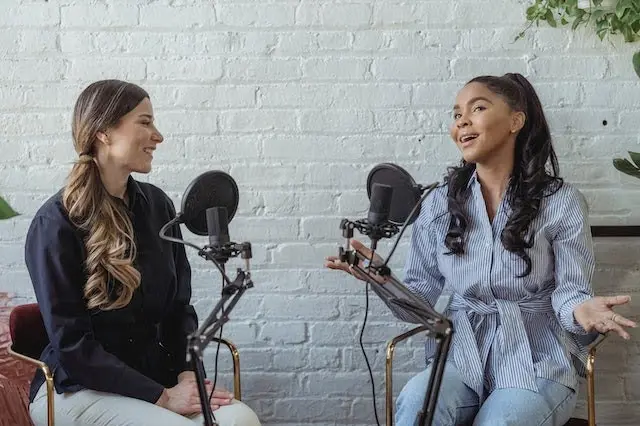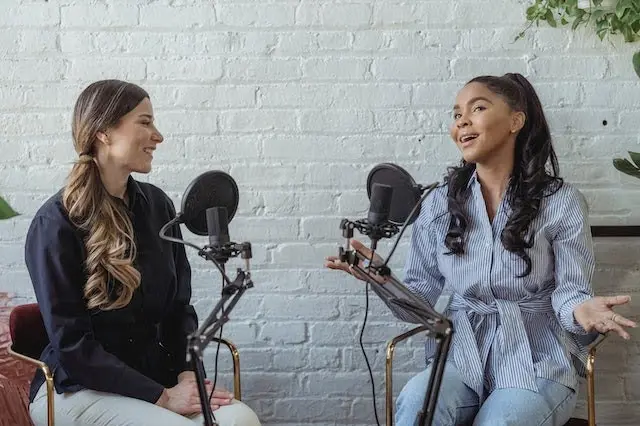Fashion podcasting has become more than a niche. It’s a global trend. Listeners want more than fabric stories; they want real voices—designers explaining textures, patterns, inspirations. Yet, one of the biggest challenges for creators is not the conversation itself but how it sounds. Great ideas lose impact if they arrive wrapped in poor audio quality. To make a designer’s voice shine, your recording must do justice to the creativity behind the words.
Before hitting the record button, think of your equipment as your wardrobe. The right tools define your voice’s clarity. You don’t need a studio filled with heavy machinery, but a few essentials make all the difference. Start with a condenser microphone—they capture nuances like the gentle sigh of a designer describing silk or the pause before revealing a new collection’s secret. If you’re working on a tight budget, even USB microphones now rival some studio models in crispness.
Keep your environment controlled. Rooms with rugs, curtains, or bookshelves absorb sound and prevent unwanted echo. The fewer hard surfaces, the better. And if you record while traveling or at fashion events, portable soundproof shields can reduce background chatter. A clear recording transports listeners straight into your conversation—like sitting in the same atelier.
A good interview flows like a fitting session—measured, precise, yet flexible. Research your guest deeply but allow spontaneity. Start with open-ended questions. Let them describe the color palette of their latest line, their creative rituals, or even the failures that shaped them. Many podcasters forget: audio storytelling begins long before the microphone turns on.
The best fashion podcasts balance rhythm—alternating between long, reflective answers and sharp, fast exchanges. If your guest pauses often, don’t rush. Silence, in sound design, is texture. It lets words breathe.
If possible, ask the designer to use headphones with a built-in mic. This minimizes echo and enhances clarity. Inform them about recording beforehand—it’s not just professional courtesy; it’s a legal requirement in many regions. A quick test call can save hours of editing later.
Pro Tip: To make the conversation sound natural, sync your audio with your guest’s track using time alignment tools. A slight delay can make even a brilliant interview feel robotic.
Think of post-production as tailoring. You don’t create new fabric; you refine what’s already there. Remove long silences or filler words sparingly. Over-editing kills authenticity. Enhance volume consistency using compressors, and don’t forget equalization—adjusting frequencies can make voices sound warmer or cleaner. A common trick among experienced editors: roll off low frequencies below 80 Hz to remove room rumble.
If your podcast has a fashion-forward theme, background music can match its energy. Soft ambient beats or acoustic sounds often complement interviews without overpowering them. Keep it low—your listeners came for the words, not the soundtrack.
Listeners recognize voices just as they recognize logos. The tone, pace, and sound profile you maintain across episodes form your podcast’s brand identity. A fashion podcaster who interviews designers weekly must ensure that each recording sounds familiar, even if the topics change. Consistency builds trust. It signals professionalism.
Using a style guide for sound—yes, that exists—helps. Note preferred volume levels, intros, transitions, and outro lengths. Over time, these elements create a seamless listening experience. Fashion thrives on repetition and reinvention; your podcast sound should do the same.
While fashion appeals to the eye, podcasting appeals to the ear. That difference changes everything. Your listeners can’t see the fabrics or sketches; they must feel them through sound. So when a designer describes an intricate embroidery, you must capture the emotion in their tone. Emphasize the rustle of fabric, the background hum of a studio—it adds realism.
Think about pacing, too. A rapid-fire conversation might fit streetwear topics, while a slower tempo suits haute couture discussions. You’re not just a host; you’re a sound designer building an atmosphere.
Background notifications, air conditioning noise, even a distant car horn—these can interrupt your listener’s immersion. Always record in “Do Not Disturb” mode, and avoid typing or shuffling papers during calls. Microphones are unforgiving; they catch everything. A 2023 Spotify for Podcasters survey found that 68% of creators lose engagement when technical flaws distract from the content.
And remember: fashion may forgive bold experiments, but audiences rarely forgive bad sound.
Fashion podcasting is storytelling through voice, rhythm, and tone. Every episode is a runway for ideas. Whether you’re interviewing a Paris-based couturier or an emerging streetwear designer from Seoul, the principle remains the same—sound shapes perception. Good audio recording is invisible yet unforgettable; it lets listeners focus on the story, not the static.
Master the basics, refine your editing, respect your guest’s time, and your podcast will do what good fashion always does—turn attention into admiration.
Because in this world, clarity is luxury.






